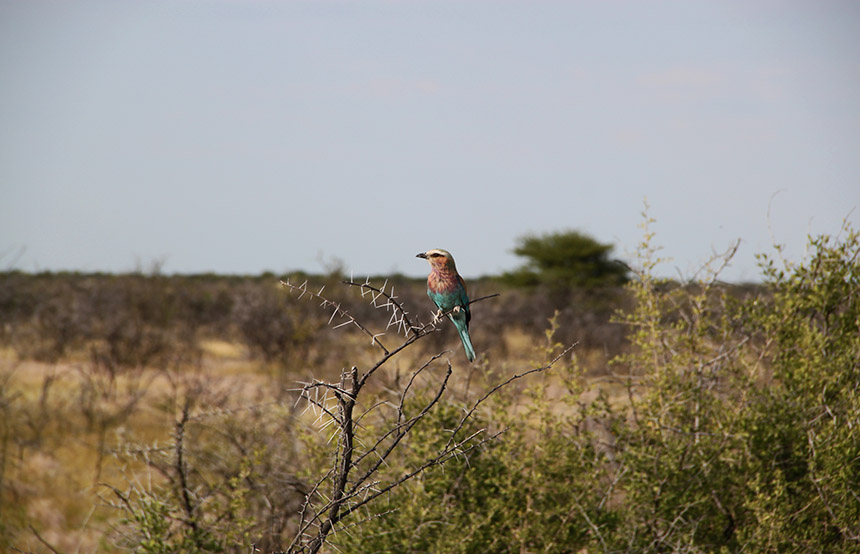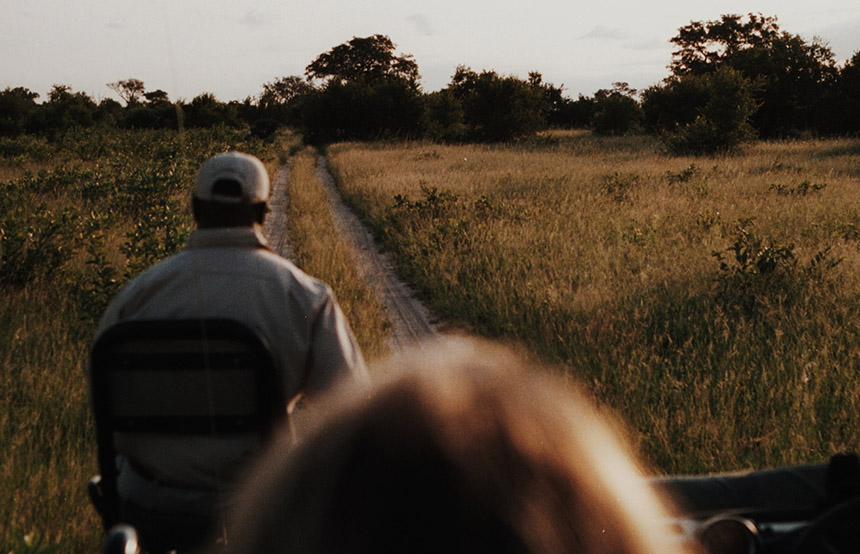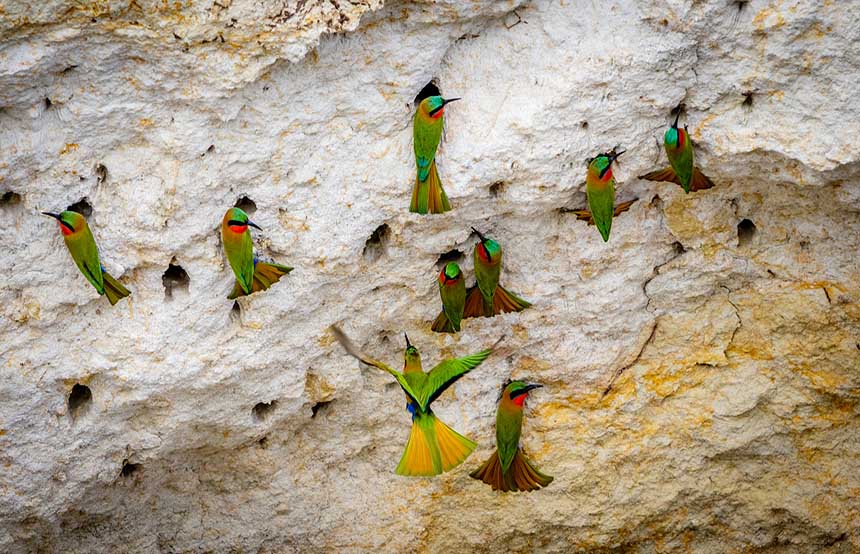The African savannah’s big beasts have obvious appeal, but the continent is also a birder’s paradise, home to avian species – resident, endemic and migratory - ranging from the rangy (the ostrich) to the downright bizarre (the shoebill stork) and every shape, size and colour in between. Rise with the sun for honey-hued sightings of lilac-breasted rollers in the Okavango Delta and listen to the chorus of carmine bee-eaters and yellow-billed kites as you walk through Namibia’s Caprivi Strip. If, however, African birding safaris really mean ticking off those all-important bucket list sightings of rare green-breasted pittas and Pel’s fishing owls, then we’ve got you covered. In fact, our Africa specialists know the exact tree where a breeding pair roost at one of our favourite camps in Chobe National Park.
Botswana
Quite simply one of the most amazing birding destinations in the world, Botswana is home to roughly 600 bird species. Strewn across the watery wonderland of the Okavango Delta, the arid Makgadikgadi salt pans and wild Chobe National Park, Botswana is as diverse as Africa gets. In Xakanaxa Lediba, it’s all about herons. Renowned as a birdwatchers’ paradise, you’ll be spoilt with sightings of busy sieges, as well as storks, egrets and ibises. While in the delta and Linyanti swamp region, you’ll be greeted to the sound of harmonised choruses of collard sunbirds and white-rumped babblers and the accompanying colourful dances of lilac-breasted rollers and Schalow’s turaco. Botswana is an all-weathers birding safari destination too. In the winter months (provided you have an eagle-eyed guide) you can probably tick off 80 to 100 species on a single day’s birding safari; while in summer the figure can go up to 150 species plus.

Namibia
Namibia is home to 13 endemic bird species, including the gloriously named rosy faced love bird and the Herero chat. Eight of the 13 call the Etosha region home, where they share the massive salt pan (Etosha means ‘great white space’) ecosystem with around 410 other bird species including several raptors and beautiful blue cranes. Elsewhere, Erongo and the central highlands are great for migrant species. In summer you can see literally thousands of yellow-billed kites and black kites feasting on the alates (flying termites) that leave their colonies during the rains. Meanwhile, Namibia’s coastline has year-round populations of flamingos, pelicans and wetland species such as African black oystercatchers and Damara terns. Different again, the Caprivi Strip region hosts water birds, herons and summer migrants such as the glorious carmine bee-eaters.

South Africa
South Africa may not score as high when it comes to bucket list birding safaris but with an avian count of over 840 separate species, it definitely should. Get the binoculars out in Kruger National Park, which abounds with colourful crested barbets, brown headed parrots and striking plum coloured starlings and run wild (if you can keep up) with ostriches in Oudtshoorn. If you’re willing to work for your birding spots and shots too, journey into KwaZulu-Natal. Look out for pied kingfishers and white-faced whistling ducks along its dam and marico flycatchers darting above. And if you haven’t got time for a two-week birding extravaganza, many of the country’s big name birds can be spotted from its cities’ suburbs on a Big Short Break. Get a birds eye view (literally) of African barbets on Table Mountain, get up close and personal to penguin colonies at Cape Point and stop to get a shot of vibrant malachite sunbirds and swee waxbills at Kirstenbosch National Botanical Garden.

Uganda
Last but by no means least, Uganda can claim the honour of being home to nearly half (1,000 plus) of all the bird species in Africa. Found dotted across drastically differing landscapes from crater lakes to the banks of the White Nile, legend has it that one three-week trip around the country resulted in one eagle-eyed spotter ticking off an astonishing 665 species. If it’s quality you’re after on African birding safaris, head to the country’s wild Bwindi Forest for sightings of the rare, green-breasted pitta, or travel by boat to the fringes of Lake Albert (Africa’s seventh largest lake) to see the extraordinary shoebill stork in its natural habitat.













